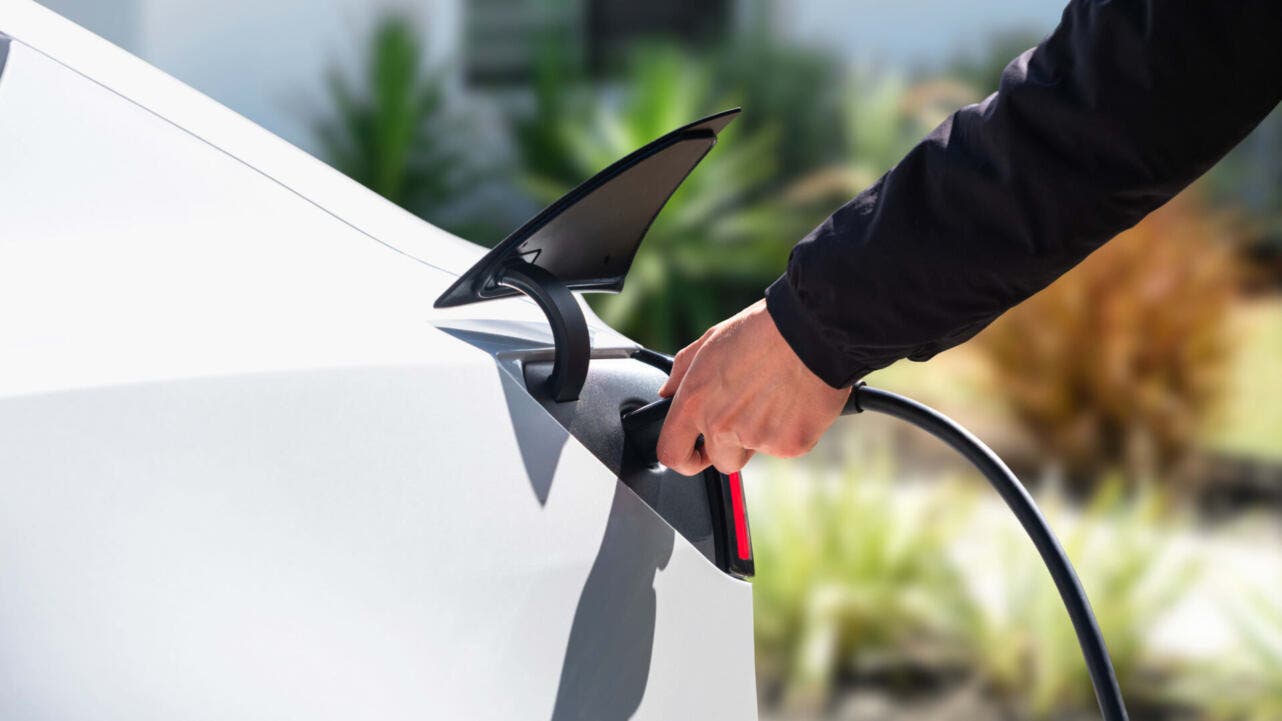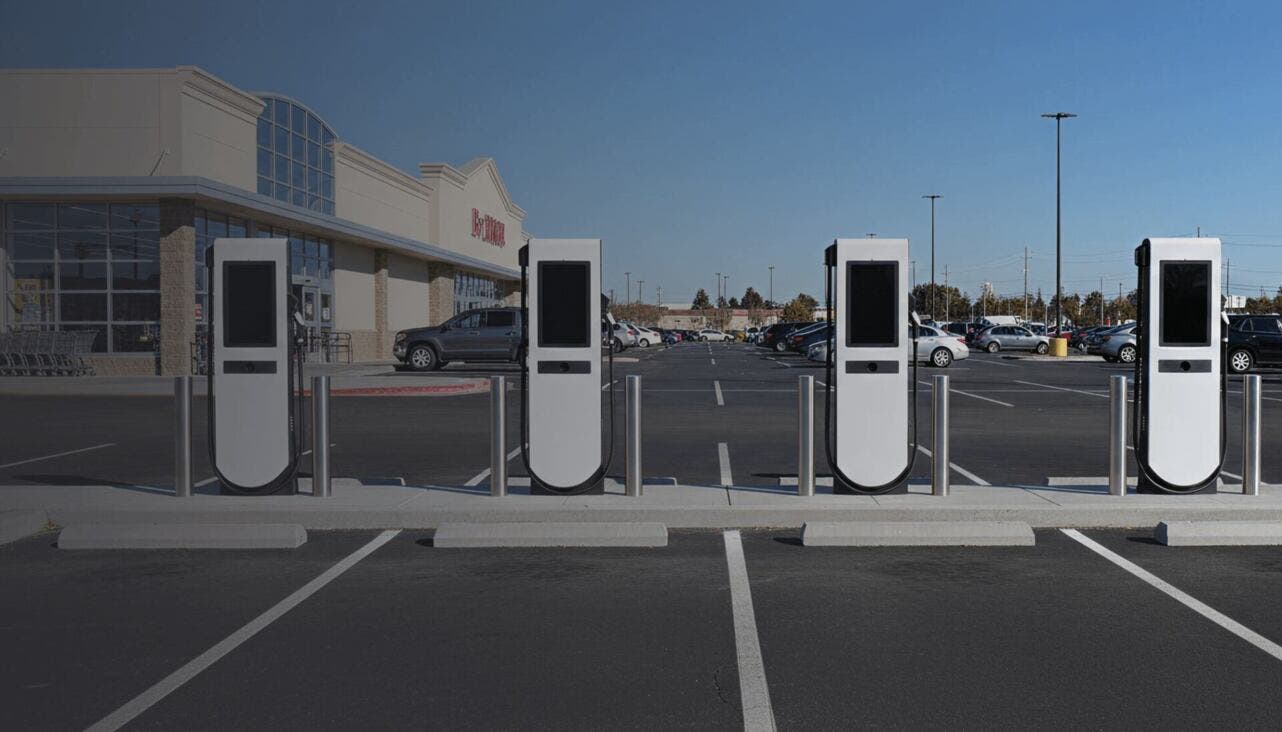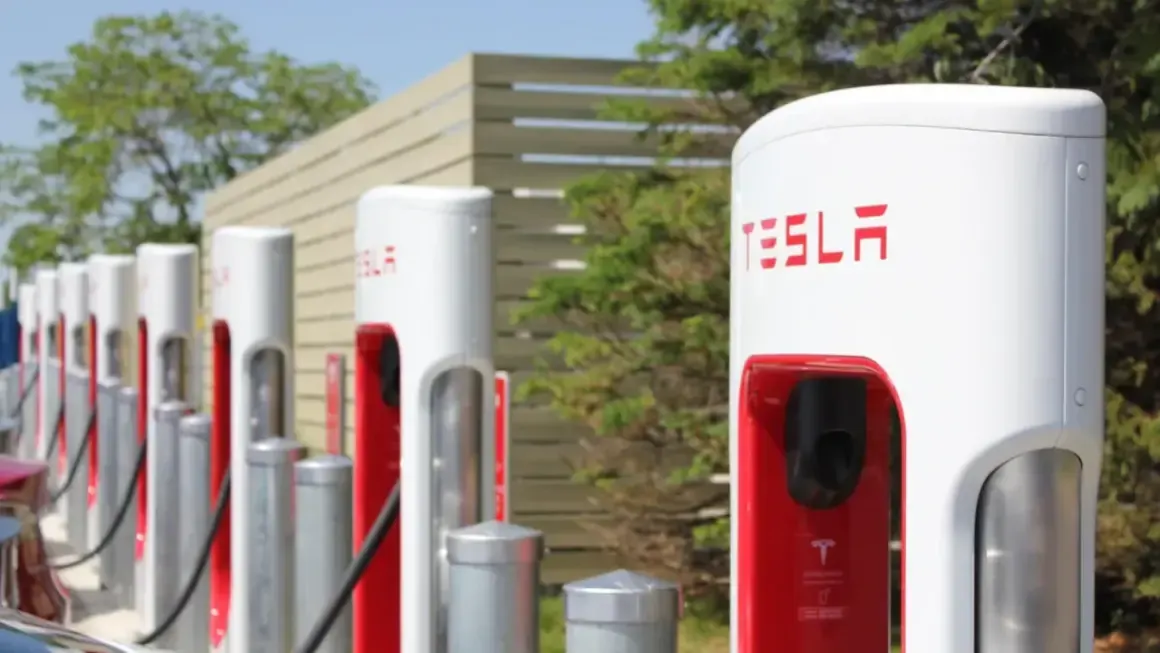America’s electric revolution keeps adding plugs like they’re going out of style. In the third quarter of 2025, the US gained more than 4,000 new DC fast-charging ports, pushing the national total past 64,000. Sure, the summer rollout slowed a bit, but apparently even the charging industry deserves a vacation.
According to data from Paren’s latest report, the country now boasts 64,486 public fast chargers across 12,375 stations. That’s despite a slight 12% dip in new openings compared to spring. The lull is expected to reverse soon, with Paren projecting another 16,700 stations by year’s end. Larger hubs are also becoming the norm, because no one likes waiting in line to plug in, now making up 27% of all sites, up from 23% last quarter.

Naturally, Tesla continues to dominate the leaderboard, responsible for nearly 45% of all new fast-charging ports this quarter. Following distantly behind: ChargePoint, Red E, Electrify America, and EV Connect. Yet smaller regional players are gaining traction, proving there’s still room at the power outlet for everyone. Every single US state added at least one new fast-charging station, California, predictably, added 108 because California.
The summer travel surge supercharged demand, with 45 states seeing higher usage of fast chargers. Tourists in Maine, Montana, and Oregon apparently traded lobster rolls and hiking trails for kWh top-ups. Meanwhile, Tesla’s decision to open its Supercharger network to non-Tesla drivers seems to be quietly reshaping the market, other charging networks have seen mild drops in traffic, probably because no one beats Tesla’s plug-and-play simplicity.

Reliability, the Achilles’ heel of public charging, crept up to 92.3%, though Oklahoma remains the weakest link, despite improving. Maintenance is now the hot topic: the real test isn’t building chargers, it’s keeping them alive long enough to charge something.
And yes, charging got pricier, by exactly one cent. The national average hit $0.49 per kWh, with Hawaii still winning the “Most Expensive Island Electricity” award at $0.85. Nebraska, bless it, remains the cheapest place to fill your EV.

